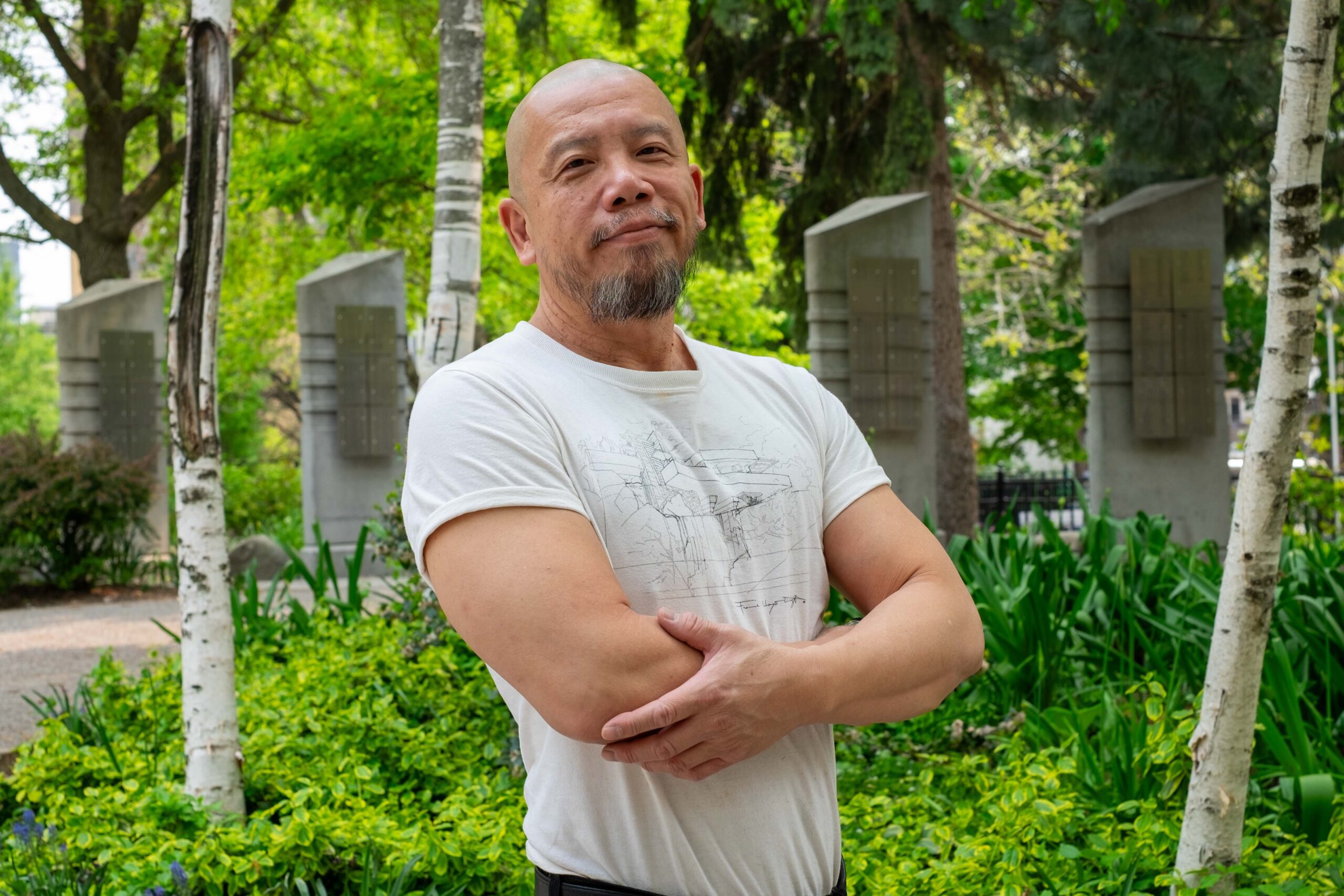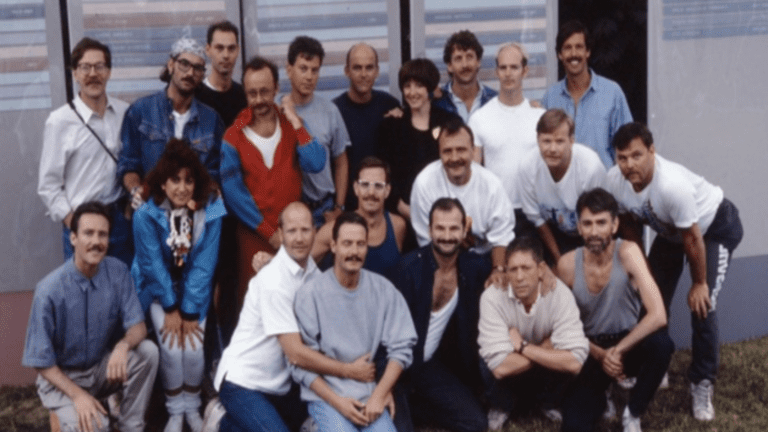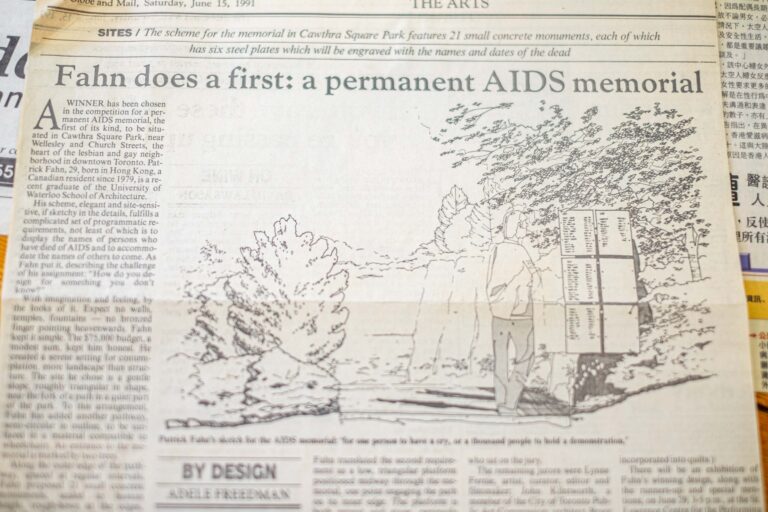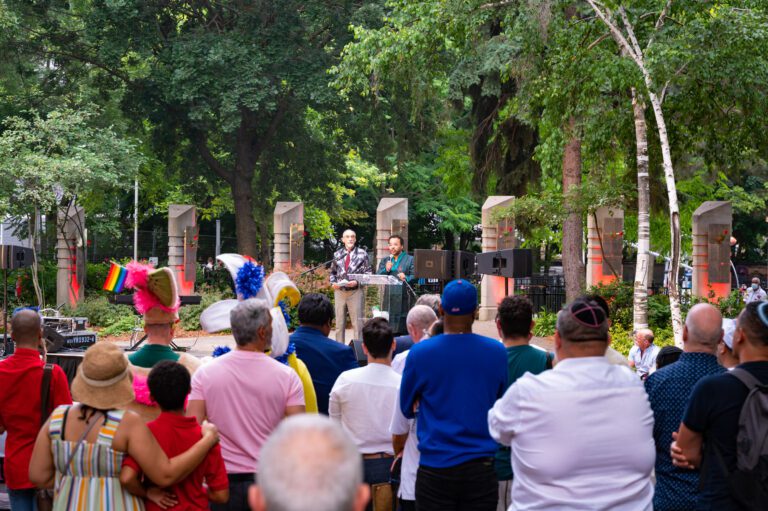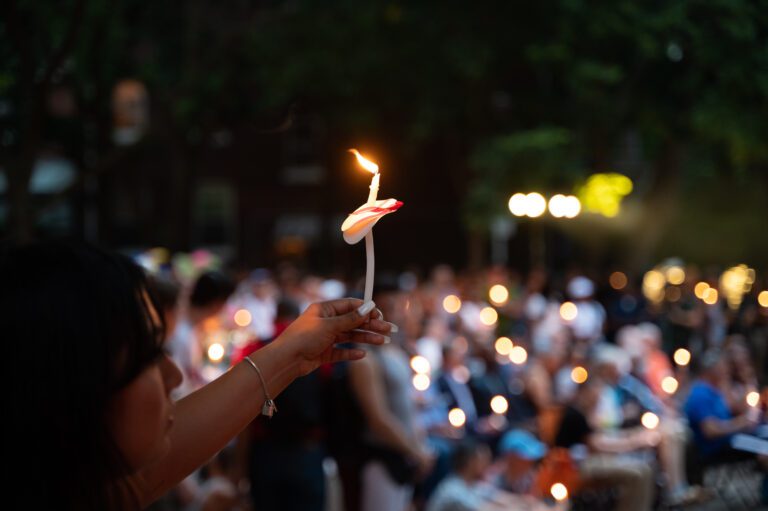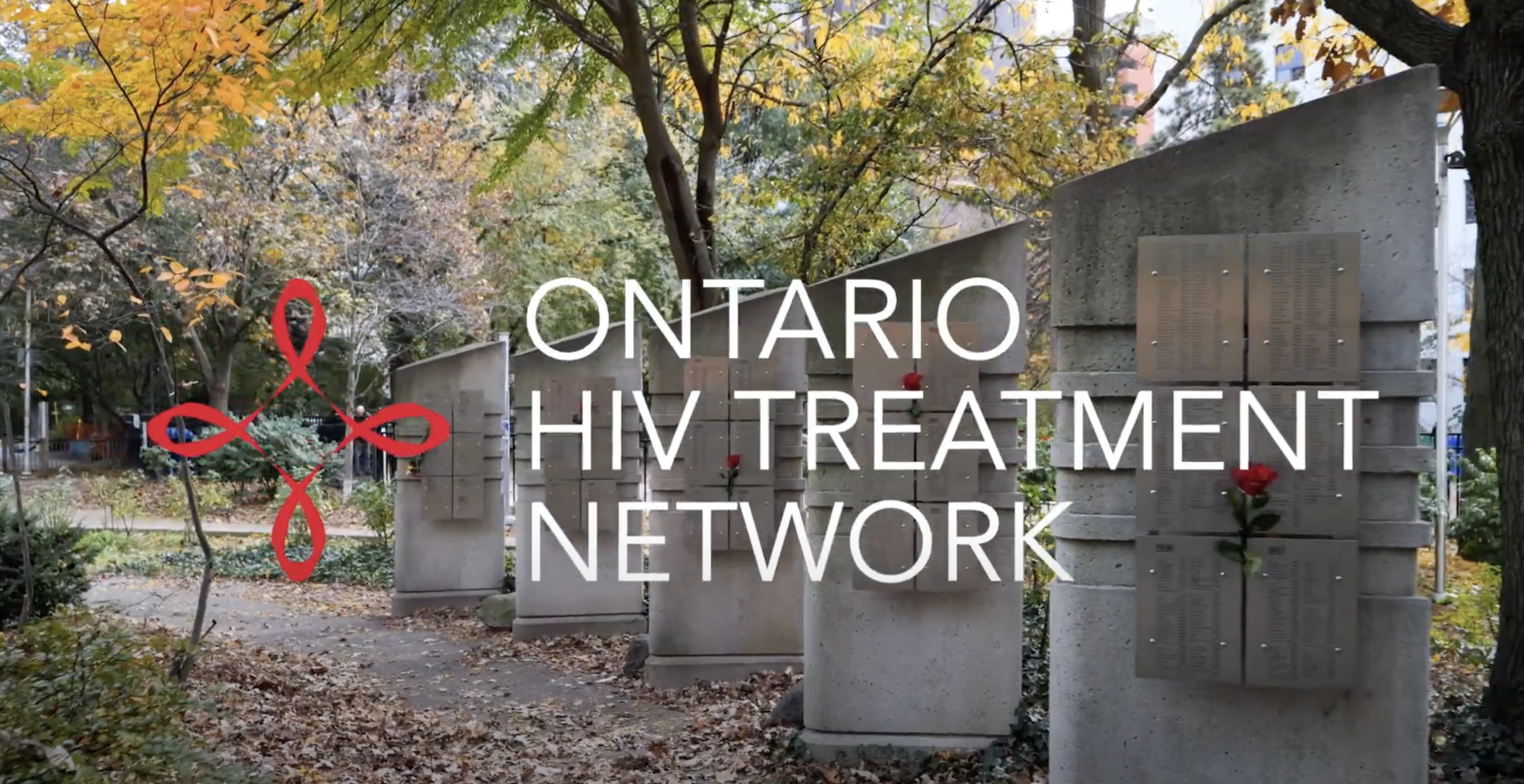Existing in the stillness of Barbara Hall Park, amid the bustle of Toronto’s 2SLGBTQ+ Village, the AIDS Memorial has come to mean many things to many people. Opened in 1993, it was designed by city architect Patrick Fahn (pictured above). He was all but 30 at the time.
People started losing loved ones to AIDS in the 1980s. The experience was isolating and devoid of dignity. On Lesbian and Gay Pride Day every year, a group of 2SLGBTQ+ folks led by Michael Lynch began installing a makeshift memorial on the south side of The 519 to honour their loved ones. They knew they eventually needed a permanent memorial, so they organized and called for proposals in the then-quarterly Xtra Magazine. Patrick was among those who responded.
Patrick recalls the very specific aesthetic and functional requirements of the brief. “The memorial had to be able to have names added every year. It had to be a space for quiet reflection, as well as double up as a venue for public events (pointing to the Candlelight AIDS Vigil, now an annual tradition).” Patrick picked the area behind The 519 (then called Cawthra Park) as seemed perfect to host the permanent memorial. “It had a certain peace and quiet to it,” he explains.
Fun fact: Patrick submitted designs to the competition twice, in 1990 and 1991. The first time, none of the submissions received appealed to the committee, so they called for submissions again the following year. Patrick’s design was finally selected for what would become the memorial we know today. “I remember presenting my idea to a room full of people at The 519. I was petrified!” Patrick is often asked what inspired his design. “The truth is I didn’t spend a lot of time thinking about it. It was one of those times when the idea just came to me!”
Through City funding and private donations, work on the memorial began promptly. Patrick’s desire was for the memorial to be able to ‘change colour’ every season. That vision was realized by Alex Wilson who designed the landscape around the structure, embellishing it with a variety of annuals and evergreens. Concrete was poured to lay the foundations for the pillars that would bear people’s names. Trucks came in with trees that were planted on site, and volunteers helped plant the shrubs. A ramp was built connecting the two memorial entryways to the central performance area.
With that, Toronto had its own permanent memorial honouring those lost to AIDS and those who live with HIV. Poems by Michael Lynch and Shoshanna Addley welcome visitors to the memorial. Shoshanna’s poem pays tribute to those unnamed. Sadly, both Michael’s and Alex’s names are also engraved on the memorial.
At the peak of the AIDS crisis, the committee received between 300 and 600 names each year. Today, that number has significantly dropped. In 2023 – its 30th year – 11 names were engraved on the memorial. However, the fact remains: HIV and AIDS continue to disproportionately impact our communities. The virus is still here, but so are those who live with HIV. What also continues is our strength to stay resilient in our fight to end HIV stigma and increase access to equitable health care.
HIV prevention and treatment has greatly advanced. What does that mean for the long-term significance and relevance of the memorial? Patrick responds, “Older generations of people are aware of HIV in a very different way. There was no medication back then, let alone prevention. For them, the memorial is a cemetery. It is a grave for many of their loved ones who didn’t have a proper burial. Some day when there is a cure for HIV after all, the memorial will continue to be a reminder of our painful history and a celebration of our collective strides made.”
30 years later, the AIDS Memorial is still here.
Community Video: The Ontario HIV Treatment Network (OHTN) looks back on the first 30 years of the Toronto AIDS Memorial. Muluba Habanyama interviews three long-time community members to find out what the memorial means to them. A big thank you to Grace Chiutsi of AIDS Committee of Toronto (ACT), Trevor Stratton of Communities Alliances & Networks (CAAN) , and Rodney Kort of the OHTN for participating.


